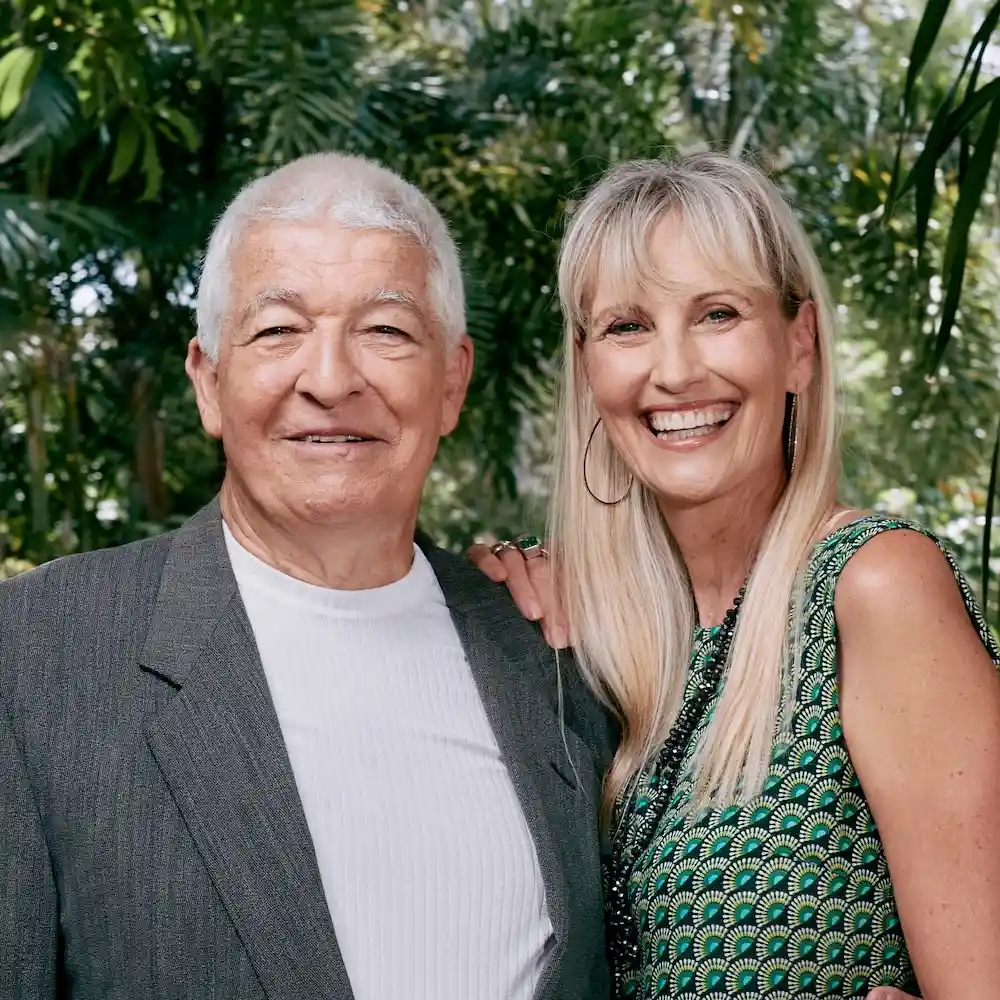Omissions, exaggerations, fabrications, deception, misleading statements, half-truths, pathological, little white ones, bold-faced lies—oh, the stories they create when caught red-handed.
Whether it’s a partner being evasive or a colleague covering up, the unease of dishonesty can be disheartening. And it threatens to shatter your trust and shake the foundations of even the most robust relationships.
The secret to detecting a lie is in their body language. And when you learn how to tell if someone is lying to you, you can better protect yourself from being misled.
How to Tell If Someone Is Lying: 18 Signs to Look Out For
Knowing how to tell if someone is lying to you can be tricky. However, research shows that when someone’s actions don’t match their words, most people, especially women, tend to believe what they see over what they hear.
That’s why body language can help reveal the signs someone is lying. It’s a “powerful tool you can use to influence others and to succeed in business and personal relationships,” as Barbara Pease, a body language expert and co-trainer of Mindvalley’s Mastering Body Language: Truths, Lies, Love & Power Quest, explains.
So if you suspect someone’s lying, pay attention to these 15 signs:
Body cues
The body is a chatterbox, spilling beans even when the lips are sealed. Here are some signs to pay attention to:
- Fidgeting. People may fidget with their hands, hair, or clothes when they’re feeling anxious or nervous.
- Crossing their arms. As a sign of defensiveness or dishonesty, it’s a way of creating a barrier between themselves and the person they’re talking to.
- Touching their face. This is because they’re trying to self-soothe or calm their nerves.
- Covering their mouth. This can be a sign that they’re trying to hide something or that they’re feeling anxious or nervous.
- Feet shuffling. People might do this when they’re uneasy or dishonest as a way to expel nervous energy.
Example of how to tell if someone is lying: Imagine suspecting your partner of infidelity. When asked, they insist there’s nothing fishy.
Yet, as they speak, they cross their arms (defensive), avoid eye contact (evasive), and rub the back of their neck (anxiety).
These cues hint at how to tell if someone is lying about cheating, as their “no” might have silent “maybes” dancing along.
Body language rule to keep in mind: “Read gestures in clusters of three,” says Allan Pease, known as “Mr. Body Language” and the co-trainer of Mindvalley’s Mastering Body Language: Truths, Lies, Love & Power Quest.
A “cluster” is essentially a sentence. So reading the gestures in clusters of three can give you a clearer understanding of the situation, helping to avoid assumptions and misunderstandings.

Facial cues
When it comes to spotting liars, facial expressions often tell stories that words try to hide. The side eye, a forced smile—these facial cues are like little truth-tellers.
Here’s what to watch out for:
- Avoiding eye contact. The old adage about lying eyes holds some truth; often, when someone is uncomfortable with being caught in a lie, they’ll avoid eye contact.
- A fake smile. It’s one that doesn’t reach the person’s eyes. And it often comes with other cues, like raised eyebrows or a tight jawline.
- Blinking rapidly. As a sign of nervousness or anxiety, it can mean that someone is trying to be dishonest.
- Tight lips. It’s something someone does when they’re feeling tense or anxious. It can also be a sign that they’re trying to hide something.
- Furrowed brow. In a lie, it can be a sign of anger or frustration. If someone is furrowing their brow while talking to you, it could be a sign that they’re not being honest.
Example of how to tell if someone is lying: Let’s say you ask your child about who ate the last cookie. They say it wasn’t them, but their eyes dart around, avoiding yours.
This little eye dance can be a lesson in how to tell if someone is lying—eyes often spill the beans when words won’t.
Body language rule to keep in mind: “Read gestures in context,” advises Allane. “In other words, the context in which they’re happening.”
The surrounding circumstances play a big role in how we interpret body gestures. So, getting the context right is crucial for interpersonal communication.
Tone of voice cues
Voices can tremble or rise when someone’s telling a lie. “Our words are 7% of our communication, but our tonality is 38% of our communication,” highlights Linda Clemons®, a body language expert and trainer of Mindvalley’s Body Language for Dating & Attraction Quest.
Listening closely can often reveal the hidden truths tucked away behind words. So here’s how to tell someone is lying by the tone of their voice:
- Changes in pitch or tremors. A noticeable rise in pitch or a shaky voice can signal nervousness.
- Hesitations or throat clearing. These might be a person’s way of buying time to think.
- Unusual speed. Talking too fast could be an attempt to rush through, while slowing down might indicate they are thinking on their feet.
- Repeating phrases or words. When unsure, people tend to repeat certain phrases or words.
- Inconsistencies in body language. Saying “I’m thrilled” while edging towards the exit doesn’t quite add up, does it?
Example of how to tell if someone is lying: You’re networking at an event, and you strike up a conversation with a fellow attendee who claims to be thrilled about their current project. Yet, as they speak, their eyes are scanning the room, their arms are folded, and they are shifting on their feet like they’re standing on a bed of hot coals.
Their words are all sunshine, but their body language is shouting something completely different. This incongruence between words and actions could be a small red flag that something’s amiss.
Body language rule to keep in mind: “Look for congruence,” Allan says. “Now congruence means that what you are hearing, the verbal, will match what you are seeing, the body language or the non-verbal.”
Instinctual cues
Ever felt something was off but couldn’t put your finger on it? That’s your instinct at work.
The thing is, your gut often senses deceit before your mind does. Here are some signs to pick up on:
- Uneasiness. You have a nagging feeling that something’s just “off.”
- Physical reactions. When someone is lying to you, you may experience physical reactions such as a racing heart, sweaty palms, or a knot in your stomach.
- Sense of confusion. You might feel confused, wondering “Why do people lie?”, or find it hard to follow along.
Example of how to tell if someone is lying: Say you’re chatting with your maid of honor about the bachelorette party guest list. Your gut starts tingling when she hesitates before agreeing to add certain names. And you notice she’s now mirroring your body language—a bit too perfectly, actually.
Despite her quick recovery and reassurance, that pause felt like a tiny alarm bell, hinting that she might not be entirely honest. This subtle cue from your gut, paired with her hesitation, could be your instinct telling you there’s more to the story.
So, sometimes it’s not just about mirroring body language but tuning into those gut whispers that may signal a fib in the making.
Body language rule to keep in mind: “Often people with charisma possess the ability to charm and influence others—it makes them irresistible,” says Linda. The thing is, charisma often taps into instinctual cues, as it’s about connecting and resonating with others on a fundamental, often unspoken level.
The right body language, like maintaining eye contact or mirroring gestures, can trigger positive instinctual reactions. Consequently, this makes interactions feel natural and engaging.
And the best part, according to Linda? “Charisma is a skill that can be developed along with that mental mindset.”

Why Do People Lie?
We, as humans, lie for a variety of reasons. Some of the most common reasons include:
- To avoid punishment. When we think we might get into trouble for something we did, we may lie to avoid the consequences.
- To protect ourselves or others. Sometimes we lie to protect ourselves or others from harm. For example, we might lie to a stranger about our whereabouts if we feel unsafe. Or, we might lie to a friend to cover for their mistake.
- To gain something. We may also lie to get what we want. This could be something as simple as getting out of doing chores or something more serious, like getting a promotion at work.
- To maintain appearances. Some of us lie to maintain our image or reputation. For example, we might lie about our education or work experience to appear more qualified.
- To manipulate others. Lying can also be used to sway others into doing what they want. For example, manipulation in relationships might mean that someone lies about their feelings to get someone else to fall in love with them.
Research shows that, on average, people lie one or two times a day. And then, there’s research that also found that around 60% of people can’t go 10 minutes without lying at least once.
What to do when you’re being lied to
While these falsehoods can range from harmless fibs to serious deceits, the fact of the matter is, it sucks being lied to. And it can lead to a sense of awkwardness where you might be unsure of what to say or do.
So here are a few things you can do to not be socially awkward in those situations:
- Stay calm and collected. How you react is important. Getting emotional or angry may make the situation worse.
- Call them out on their lie. Once you’re sure that someone is lying to you, call them out on it. Be direct but respectful.
- Ask for an explanation. If you’re willing to give the person a chance, ask them to explain why they lied. This may help you understand their perspective and forgive them.
- Set boundaries. If the person is someone you can’t trust, set boundaries. This may mean limiting your contact with them or ending the relationship altogether.
Remember, you have the right to be treated with honesty and respect. If someone is lying to you, it’s not your fault. Don’t feel guilty or ashamed for calling them out on it.
From Lie to Light
Navigating truth and deception? Sounds like walking a tightrope over a pit of snapping crocodiles, doesn’t it?
But as Allan says, “Recognition of deceit, procrastination, and evaluation gestures can be some of the most important observation skills you can learn.” And who better to guide you in doing so than Allan and Barbara Pease as well as Linda Clemons®?
In their Mastering Body Language: Truth, Lies, Love & Power and Body Language for Dating & Attraction quests, respectively, on Mindvalley, you’ll learn how to…
- Have better communication skills,
- Read people,
- Detect lying and deception,
- Ramp up your interpersonal skills, and
- Build rapport.
When you sign up for a Mindvalley account, you’ll get to dive into free lessons, learn the ropes from Mindvalley experts, and, just to sweeten the pot, become part of a global community.
So, in the grand game of life, why be a pawn when you can be a player? Arm yourself with the skills, change the rules of engagement, and become the social Sherlock you were meant to be.
Come on in; the Mindvalley door’s wide open.










